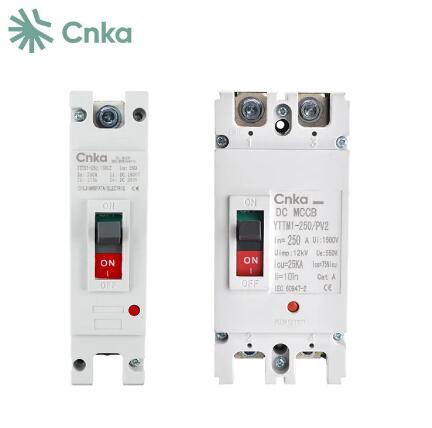DC MCCBs vs. AC MCCBs: Understanding the Differences and Choosing the Right One
2024-08-22
When it comes to protecting electrical circuits, Molded Case Circuit Breakers (MCCBs) are a go-to solution for many engineers and electricians. However, the type of MCCB you choose depends on whether you are dealing with AC (alternating current) or DC (direct current) systems. While AC MCCBs are widely used, DC MCCBs are becoming increasingly important in modern electrical installations. In this blog, we’ll delve into the key differences between DC and AC MCCBs, helping you understand when and why to use each type.
The Basics of MCCBs
MCCBs are protective devices that automatically disconnect electrical circuits when they detect conditions like overloads or short circuits. They are essential for preventing damage to equipment and ensuring the safety of the electrical system. Both AC and DC MCCBs perform this basic function, but the way they achieve it varies significantly due to the different behaviors of AC and DC currents.
How AC and DC Currents Differ
Before diving into the differences between AC and DC MCCBs, it’s important to understand how AC and DC currents differ:
- AC Current: Alternating current (AC) changes direction periodically, typically 50 or 60 times per second (50/60 Hz), depending on the region. This periodic reversal of current flow helps in extinguishing electrical arcs naturally when a circuit is broken.
- DC Current: Direct current (DC) flows in a single, constant direction. This continuous flow makes it more challenging to interrupt and can result in sustained arcing when the circuit is opened.
Key Differences Between DC and AC MCCBs
1. Arc Quenching Mechanism
- DC MCCBs: Designed with advanced arc quenching mechanisms to handle the challenges of extinguishing arcs in a continuous DC flow. These breakers often feature larger or more sophisticated arc chutes to dissipate the energy and extinguish the arc quickly.
- AC MCCBs: While they also have arc quenching mechanisms, the alternating nature of AC current makes arc extinction easier, requiring less complex designs compared to DC MCCBs.
2. Contact Design
- DC MCCBs: The contacts in DC MCCBs are designed to separate quickly and are often made from materials that can withstand the higher energy levels associated with DC arcs. This reduces contact wear and prolongs the life of the breaker.
- AC MCCBs: The contact design in AC MCCBs is simpler, as the periodic current reversal helps in reducing contact erosion.
3. Polarity Sensitivity
- DC MCCBs: In DC applications, the direction of current flow (polarity) can significantly impact breaker performance. Some DC MCCBs are designed to be polarity-specific, meaning they must be installed with the correct orientation.
- AC MCCBs: Typically, AC MCCBs are not polarity sensitive, as the current alternates direction, making polarity less of an issue.
4. Breaking Capacity
- DC MCCBs: Rated for higher breaking capacities to ensure they can safely interrupt higher current levels without damage, a critical feature in DC systems where arcing is more intense.
- AC MCCBs: Breaking capacities are generally lower, as the alternating current is easier to interrupt and extinguish.
When to Use a DC MCCB Over an AC MCCB
- DC Applications: If you are working with DC power systems, such as solar power installations, electric vehicle charging stations, or DC-powered industrial machinery, it’s crucial to use a DC MCCB. These breakers are specifically engineered to handle the unique challenges of DC currents.
- High Current DC Systems: For systems where high currents are present, such as battery banks or DC distribution networks, DC MCCBs with high breaking capacities provide the necessary protection.
- Safety and Reliability: Using an AC MCCB in a DC application can lead to improper operation, reduced protection, and increased safety risks. Always choose a DC MCCB for DC systems to ensure optimal protection and performance.
Conclusion
Understanding the differences between DC and AC MCCBs is vital for anyone working with electrical systems. While both types of MCCBs serve the same fundamental purpose, their designs are tailored to the specific characteristics of AC and DC currents. When dealing with DC applications, selecting a DC MCCB ensures that your system is protected against the unique challenges posed by direct current, providing peace of mind and enhancing the safety and reliability of your electrical infrastructure.



